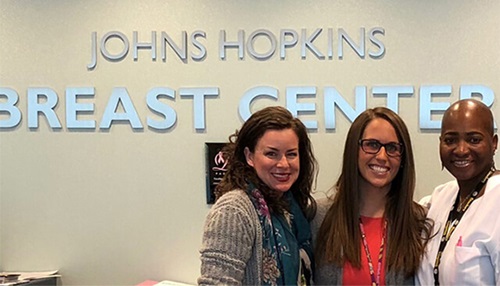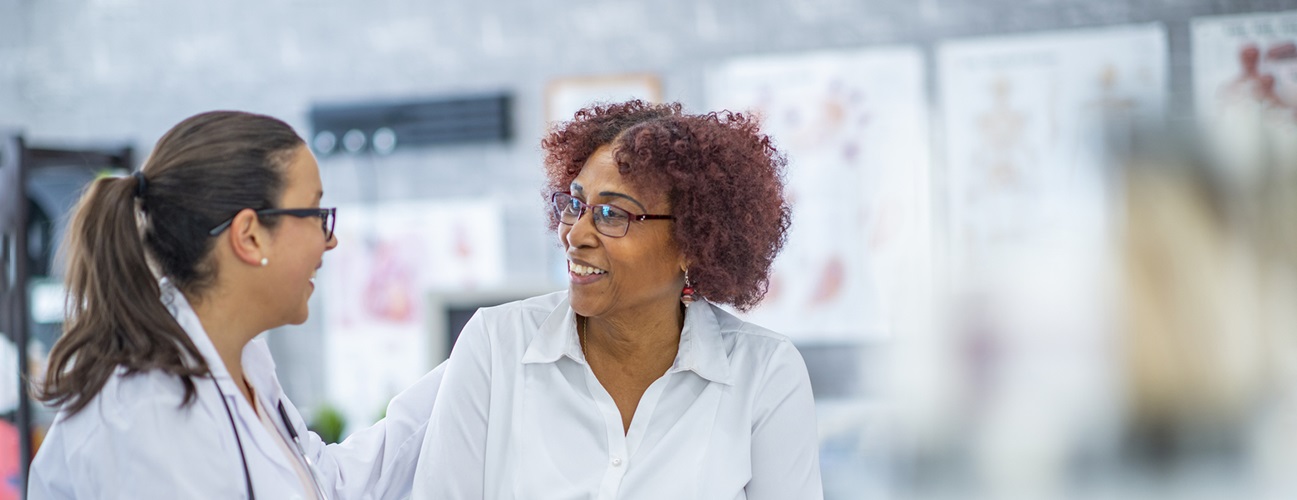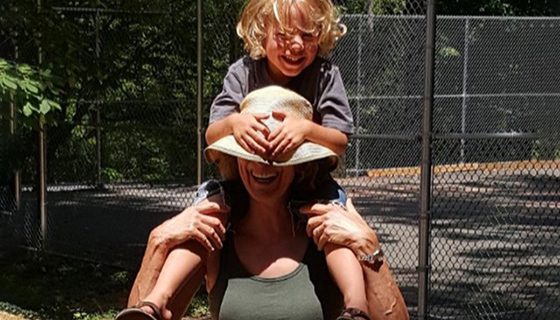Mastectomy
A mastectomy is surgery to remove a breast. Sometimes other tissues near the breast, such as lymph nodes, are also removed. This surgery is most often used to treat breast cancer. In some cases, a mastectomy is done to help prevent breast cancer in women who have a high risk for it.
Mastectomy | Breast Reconstruction Overview
A mastectomy is the removal of the breast, nipple and areola to treat breast cancer. This video examines the different types of mastectomy surgeries available.
Why might I need a mastectomy?
A mastectomy may be done as part of treatment for breast cancer.
Your doctor will likely advise you to have a mastectomy if:
- The tumor is large
- The tumor involves more than 1 area of your breast
- Using radiation therapy is not advised
The size of your breast may also help determine the type of mastectomy that is done.
In some cases, women with a high risk for breast cancer may want to have a mastectomy before cancer develops. This includes women with genes linked to breast cancer, such as the BRCA1 or BRCA2 gene. In these cases, a mastectomy is done to try to keep breast cancer from occurring.
There may be other reasons for your doctor to recommend a mastectomy.
Types of mastectomy procedures
There are several types of mastectomy procedures:
- Total (simple) mastectomy. This method removes the whole breast, including the nipple, the colored ring around the nipple (called the areola), and most of the overlying skin.
- Modified radical mastectomy. The entire breast is removed. This includes the nipple, the areola, the overlying skin, and the lining over the chest muscles. Some of the lymph nodes under the arm are also removed. Breast cancer often spreads to these lymph nodes. It can then spread to other parts of the body. In some cases, part of the chest wall muscle is also removed.
- Radical mastectomy. The entire breast is removed, including the nipple, the areola, the overlying skin, the lymph nodes under the arm, and the chest muscles under the breast. For many years, this was the standard surgery. But today it is rarely done. It may be advised when breast cancer has spread to the chest muscles.
Some newer mastectomy methods may offer more surgery options. But more studies are needed to see if these methods work as well to fully remove breast cancer or stop from starting or coming back after treatment. Newer methods include:
- Skin-sparing mastectomy. The breast tissue, nipple, and areola are removed. But most of the skin over the breast is saved. This type of surgery seems to work as well as radical mastectomy. It is used only when breast reconstruction is done right after the mastectomy. It may not be a good method for tumors that are large or near the skin surface.
- Nipple-sparing mastectomy. This is similar to the skin-sparing mastectomy. It is sometimes called a total skin-sparing mastectomy. All of the breast tissue, including the ducts going all the way up to the nipple and areola, is removed. But the skin of the nipple and areola are preserved. The tissues under and around the nipple and areola are carefully cut away and checked by a doctor called a pathologist. If no breast cancer cells are found close to the nipple and areola, these areas can be saved. Otherwise, this method is not advised. Reconstruction is done right after the mastectomy.
Breast reconstruction surgery after mastectomy
You may worry about how your breast will look after a mastectomy. In most cases, breast reconstruction surgery can be done. This surgery rebuilds the breast so it is the size and shape of your other breast. Many women have breast reconstruction done at the same time as a mastectomy. Some wait and have it done as a second surgery later.
Talk with your doctor about your reconstructive surgery options. Other options after a mastectomy include wearing a breast form (breast prosthesis) or a special mastectomy bra.
Reconstructive Surgery After Breast Cancer

This type of surgery requires not just a skilled and experienced surgeon but also a team of doctors and nurses who treat breast cancer. Johns Hopkins plastic and reconstructive surgeons specialize in complex breast reconstruction procedures and have successfully completed reconstructions for hundreds of women, restoring their self-image after cancer treatment.
What are the risks of a mastectomy?
All procedures have some risk. Some possible complications of mastectomy include:
- Short-term (temporary) breast swelling
- Breast soreness
- Hardness due to scar tissue that can form at the site of the cut (incision)
- Wound infection or bleeding
- Swelling (lymphedema) of the arm, if lymph nodes were removed
- Pain in the breast that has been removed (phantom breast pain). This may be helped with medicines, exercise, or massage.
A clear fluid (seroma) is often found in the breast after a mastectomy. If this bothers you, it can be drained in the surgeon’s office. If needed, it can then be treated with compression. Or you may get an injection that helps to harden the space in the breast to help keep fluid from collecting there.
You will likely have a scar at the mastectomy site. You may also have a pulling feeling near or under your arm after surgery.
Depression and feelings of loss of sexual identity may occur after a mastectomy.
It’s rare that breast reconstruction surgery causes complications. But problems may happen as you are healing. These problems may interfere with radiation or chemotherapy treatment.
There may be other risks depending on your specific medical condition. Be sure to discuss any concerns with your doctor before the surgery.
How do I get ready for a mastectomy?
- Your doctor will explain the procedure to you and give you a chance to ask any questions that you might have.
- You will be asked to sign a consent form that gives permission to do the procedure. Read the form carefully and ask questions if something is not clear.
- Your doctor will take your medical history. He or she will also give you a physical exam. This is to be sure you are in good health before the surgery. You may also have blood tests or other tests.
- You will be asked to not eat or drink anything (to fast) for some time before the surgery. Your surgeon will give you specific instructions.
- Tell your provider if you are pregnant or think you may be pregnant.
- Tell your provider if you are sensitive to or allergic to any medicines, latex, tape, and anesthesia medicines (local and general).
- Tell your provider about all the medicines you take. This includes both over-the-counter and prescription medicines. It also includes vitamins, herbs, and other supplements.
- Tell your provider if you have a history of bleeding disorders. Let your provider know if you are taking any blood-thinning medicines, aspirin, ibuprofen, or other medicines that affect blood clotting. You may need to stop taking these medicines before the procedure.
- You may be given medicine to help your relax (a sedative) before the procedure.
- Your healthcare provider may have other instructions for you based on your medical condition.
What happens during a mastectomy?
A mastectomy typically requires a hospital stay. Procedures may vary depending on your condition and your doctor's practices.
Generally, a mastectomy follows this process:
- You will be asked to remove your clothing and given a gown to wear.
- An IV (intravenous) line may be started in your arm or hand. You will be given medicine through the IV. This will help you relax or put you into a deep sleep during the surgery.
- You will lie on your back on the operating table.
- Your heart rate, blood pressure, breathing, and blood oxygen level will be checked during the surgery.
- The skin over the surgical site will be cleaned with a sterile solution.
- A cut (incision) will be made in your breast. The type of cut made will depend on the type of mastectomy you have. (The areas removed during surgery are shaded in green in the illustration.)
- The underlying tissue will be gently cut free and removed.
- Lymph nodes may be removed after the breast or breast tissue has been removed.
- If you are having breast reconstruction along with the mastectomy, a plastic surgeon will do the procedure after the mastectomy.
- Breast tissue and any other tissues that are removed will be sent to the lab for examination.
- One or more drainage tubes may be placed into the affected area.
- The skin will be closed with stitches or adhesive strips.
- A sterile bandage or dressing will be placed over the site.
What happens after a mastectomy?
In the hospital
After the procedure, you will be taken to the recovery room and watched closely. Your recovery process will vary depending on the type of procedure done and the type of anesthesia you are given. Once your blood pressure, pulse, and breathing are stable and you are alert, you will be taken to your hospital room.
You will likely stay in the hospital for 1 to 3 days after your mastectomy. This will depend on the extent of your surgery and if you also had breast reconstruction done.
Radiation therapy or chemotherapy may be needed after a mastectomy. Your doctor will advise you about this depending on your particular situation.
At home
Once you are home, keep the surgical area clean and dry. Your doctor will give you specific bathing instructions. Unless instructed otherwise, the narrow strips of tape across the incision can get wet during a shower. You may be directed to replace a wet dressing with a clean, dry one.
You will be instructed about how to take care of the drainage tube. This should be removed after about 2 weeks at the first follow-up exam.
The amount of pain you have will vary. It depends on the amount and location of tissue removed during surgery. Most soreness may last a few days. Take a pain reliever as advised by your doctor. Aspirin and some other pain medicines may increase your chance of bleeding. Be sure to take only recommended medicines.
If lymph node removal (dissection) was done with your mastectomy, your doctor may want you to do certain exercises. These can help limber up your shoulder and arm area, and help prevent swelling. Soreness after lymph node removal may cause you to keep your arm and shoulder very still. This can make your arm and shoulder stiff. But overdoing the exercises can also hurt you. So start the exercises slowly. Do them regularly, and progress a little each day. You may be advised to do these exercises even if you didn’t have lymph node removal.
You can often go back to your normal activities in a few weeks, based on your doctor’s recommendation. In the meantime, avoid doing anything strenuous. Don’t do things that involve using your arm too much, such as cleaning windows or vacuuming for a long time. Your doctor will tell you when you can start driving again and when you can go back to work.
If you have problems dealing with your recovery, your doctor may refer you to a volunteer agency or group for support.
Tell your doctor if you have any of the following:
- Fever or chills
- Redness, swelling, or bleeding or other drainage from the incision site
- Increased pain around the incision site
- Swelling, numbness or tingling of the affected arm
Your doctor may give you other instructions, depending on your situation.
Arm care after lymph node removal
Removing lymph nodes may affect how lymphatic fluid drains from your arm, neck, and chest on the affected side. Problems with lymphatic drainage can cause swelling in your arm. You may also be at greater risk for infection from injury to your arm. And there is a higher risk for blood clots in your armpit veins after surgery to the area.
You will have to follow certain safety steps for the rest of your life after lymph node removal. This will help prevent problems in the affected arm. These safety steps include:
- No needle sticks or IVs placed in the affected arm
- No blood pressure measurements in the affected arm
- Follow instructions about arm exercises carefully
- Avoid injuries, such as scratches or splinters, to the affected arm
- Raise (elevate) the arm, with your hand above your elbow, to help drain lymphatic fluid
- Wear gloves when gardening or doing any activity where there is a risk for getting a cut in your fingers or hands. Also wear gloves when using strong or harsh chemicals, such as detergents or household cleaners.
- Avoid sunburns
- Use a clean razor to shave under your arm
- Avoid wearing any tight items on the affected arm. This includes elastic cuffs, tight watches, or other jewelry.
- Use your good arm or both arms to carry heavy packages, bags, or purses
- Avoid insect bites or stings by using insect repellents or wearing long sleeves
Your doctor may give you other instructions, depending on your situation.
Cosmetic Concerns After Mastectomy
Patients undergoing mastectomy may have concerns about the appearance of their breast(s) after the procedure. Fortunately, breast reconstruction is possible for the majority of patients after mastectomy. Your doctor will discuss with you your options regarding reconstructive surgery. Alternative solutions to reconstruction after mastectomy include the use of an external prosthesis or a special mastectomy bra.
Reconstruction after Breast Cancer | Pam's Story
After turning to Johns Hopkins for a second opinion after her breast cancer diagnosis, Pam Vierra says her reconstruction changed her life, leaving her in better shape than ever.
Simultaneous Reconstruction
Often, patients who need a mastectomy may undergo breast reconstruction surgery during the same procedure. One advantage to immediate breast reconstruction is waking up with the beginnings of a breast mound already in place.
A disadvantage is having to consider reconstruction options during an already stressful time prior to surgery for cancer. Additionally, if there is a recurrence of the cancer, the reconstruction may need to be modified. Postsurgical complications could also call for additional surgeries. Small revision surgeries or matching procedures on the opposing breast are often required.
Staged Reconstruction
An alternative solution to immediate reconstruction is a staged process, where the surgeon places a temporary tissue expander to gradually stretch the muscle and skin in preparation for an implant or reconstruction. The overall result can be more symmetrical, natural and aesthetically pleasing. It serves as a placeholder to allow for radiation and any additional cancer treatment to be completed.
Delayed Reconstruction
Some women don’t feel comfortable weighing all the options while also struggling with a cancer diagnosis. Others simply need time to come to terms with losing their breast(s). Those women may prefer this reconstructive alternative, which is available after all recommended cancer treatments are completed.








